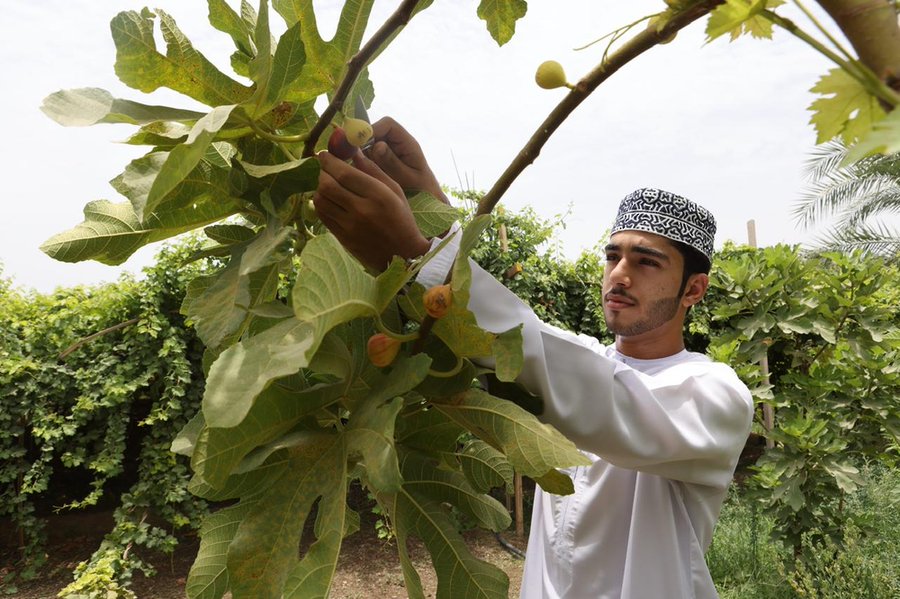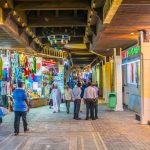Muscat: North Al Sharqiyah Governorate has reported a total agricultural production of 250,000 tons over the past three years. The area dedicated to fruit crops expanded by 2.3 per cent, covering 698 acres and yielding 4,238 tons. The typical fruit fields spanned 236 acres, while grape fields covered 17.5 acres and fig fields 66 acres. Vegetables occupied 612 acres, producing 28,870 tons, marking a 25.2 per cent area increase.
Dr Abdul Aziz bin Ali Al-Mishkhi, Director General of the General Directorate of Agricultural Wealth and Water Resources in North Al Sharqiyah Governorate, noted that the area of palm crops grew by 1.3 per cent to 7,841 acres, with a total production of 54,188 tons. The governorate ranked fourth in date production among Oman’s governorates, with 54.2 thousand tons, representing 14 percent of the national total, and 940,490 palm trees. It also secured second place in Basour (Mabsali) production with 8,694 tons from 129,540 palm trees.
The governorate is witnessing rapid advancements in food security and agriculture’s contribution to the national economy, facilitated by farmers, investment opportunities, and modern technologies. Al-Mishkhi emphasized a 3 per cent growth in the plant sector last year, with a target of 5 per cent growth. This year, 27 investment opportunities were offered, including 21 in agriculture, spanning over 315 acres.
Read More
- Cyclone Shakti downgraded to tropical storm, now 150km from Oman’s coast
- 39 Asian nationals arrested in Khasab and Bukha wilayats for illegal entry into Oman
- Oman workers’ federation hosts awareness programme to combat human trafficking crimes in tourism sector
- Oman bans import of live birds from Portugal’s Santarém and certain livestock from Egypt’s Beheira over health concerns
- Oman amends Foreign Investment Law, mandates hiring of Omanis and Social protection registration
Notable investments include ten opportunities for grape cultivation in Ibra’s Al-Haymah area, covering 50 acres, and six for palm tree cultivation in the Wilayat of Bidya, totalling 55.8 acres. Additionally, the Badran scheme in Al Mudhaibi offered four opportunities, including two for legumes over 100 acres and two for onions using modern technologies, also over 100 acres. An investment for vegetable cultivation in greenhouses and open fields in Ibra covers 10 acres.
Dr Al-Mishkhi highlighted the implementation of commercial fields for palm and fruit trees, model grape farms in Ibra, and vegetable cultivation projects. He noted the establishment of 2008 greenhouses and 21 agricultural nurseries, contributing to the significant growth in agricultural production.
Services provided to farmers include proposing specialized sites, following up on investment projects, implementing awareness programs, and offering guidance on best agricultural practices, pest control, and land leasing. Training programs for novice beekeepers and other initiatives have also been introduced.
Agricultural production of fodder and honey also saw an increase, reaching 156,305 tons and 250 tons respectively last year.
Farmer Hilal bin Nasser Al Salmi from Wilayat of Ibra shared his interest in growing figs, grapes, mangoes, palm trees, guava, bananas, onions, and garlic. He prunes his grapes annually in February, with the harvest beginning in June. He markets his produce through social media and local markets.
Mohammed bin Ali Al Mughairy, another farmer from North Al Sharqiyah, confirmed a bountiful crop production this year, particularly of grapes and figs, emphasizing the importance of regular irrigation, pruning, fertilization, and pest control in achieving high yields.






